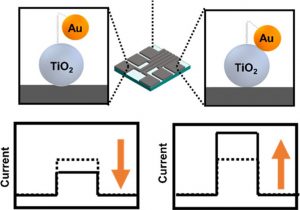Photoelectrochemical DNA biosensing using metal semiconductor nanoparticles

Tech ID
19-087
Inventors
L. Soleylami
S. Saha
A. Victorious
Patent Status
US patent filed
Stage of Research
Proof of concept available
Contact
Carmen Carrasquilla
Business Development Manager
Abstract
Photoelectrochemical (PEC) DNA sensors are a valuable biotechnology tool that are well suited for early-stage diagnosis of genetic-related diseases.1 Conventional laboratory techniques, such as polymerase chain reaction (PCR), are slow and require additional resources. In contrast, PEC sensors provide a much faster, more accurate, and highly alternative that requires fewer resources.2 Therefore, there is a need for improved PEC sensors that have a higher sensitivity and are much faster than existing sensors.
Researchers at McMaster have discovered a novel PEC DNA biosensor method that uses DNA to create a gap between metal and semiconductor nanoparticles. Notably, this is the first PEC bioassay to use only a single voltage or wavelength of light, making it significantly more sensitive and scalable than existing PEC sensors. The biosensor also has a potential for broader applications, including the sensing of other cellular component sensing using additional bio-recognition agents.
Applications
- DNA detection
- Potential for detecting RNA, proteins, and other cellular components
Advantages
- Higher sensitivity (more than 3x increase)
- Reduced chance for false positive sensing
- Reduced background signal
References
- Wei, F., Lillehoj, P. & Ho, CM. DNA Diagnostics: Nanotechnology-Enhanced Electrochemical Detection of Nucleic Acids. Pediatr Res 67, 458–468 (2010). https://doi.org/10.1203/PDR.0b013e3181d361c3
- Devadoss, A., Sudhagar, P., Terashima, C., Nakata, K., & Fujishima, A. (2015). Photoelectrochemical biosensors: New insights into promising photoelectrodes and signal amplification strategies. Journal of Photochemistry and Photobiology C: Photochemistry Reviews, 24, 43-63.
Image obtained from: Saha, S., Victorious, A., Pandey, R., Clifford, A., Zhitomirsky, I., & Soleymani, L. (2020). Differential photoelectrochemical biosensing using DNA nanospacers to modulate electron transfer between metal and semiconductor nanoparticles. ACS applied materials & interfaces, 12(33), 36895-36905.

